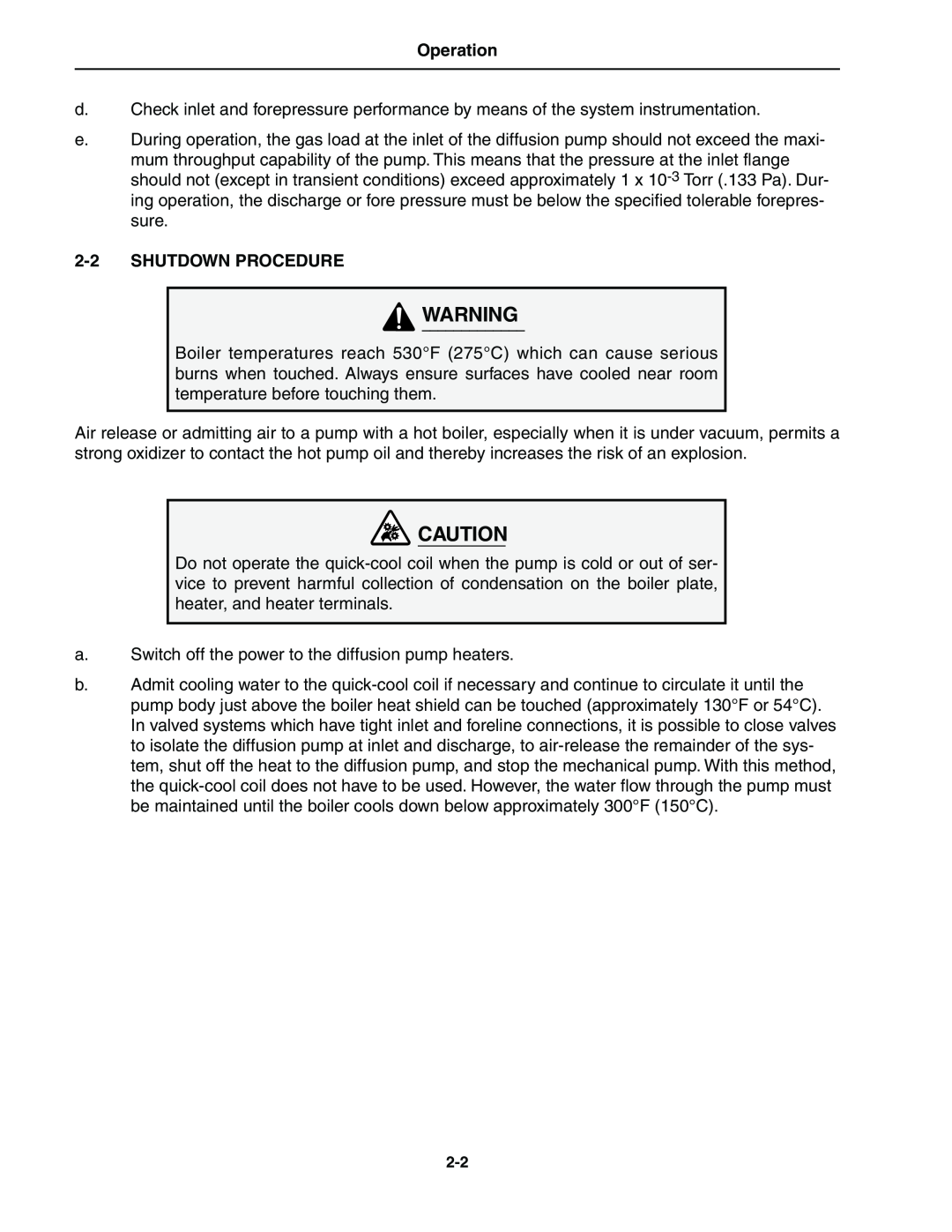
Operation
d.Check inlet and forepressure performance by means of the system instrumentation.
e.During operation, the gas load at the inlet of the diffusion pump should not exceed the maxi- mum throughput capability of the pump. This means that the pressure at the inlet flange should not (except in transient conditions) exceed approximately 1 x
2-2 SHUTDOWN PROCEDURE
WARNING
_____________
Boiler temperatures reach 530°F (275°C) which can cause serious burns when touched. Always ensure surfaces have cooled near room temperature before touching them.
Air release or admitting air to a pump with a hot boiler, especially when it is under vacuum, permits a strong oxidizer to contact the hot pump oil and thereby increases the risk of an explosion.
![]() CAUTION
CAUTION
Do not operate the
a.Switch off the power to the diffusion pump heaters.
b.Admit cooling water to the
